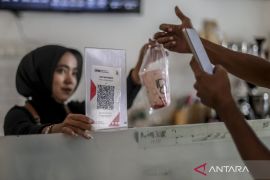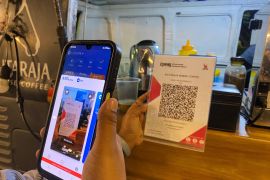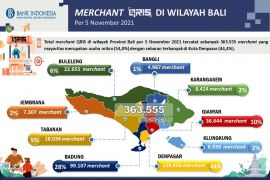"This is an extraordinary increase of 370 percent from the initial 1,170 merchants," head of the BI payment system policy department, Filianingsih Hendarta, said during an online discussion in Jakarta on Thursday.
According to Hendarta, of the 4.5 million traders, as many as 85 percent, or 3.8 million, are micro and small entrepreneurs who have made the digital switch.
QRIS volume and transactions have also increased, with 9.59 million transactions worth Rp707.6 billion recorded until July 2020, less than a year since it was first launched, Hendarta informed.
Currently, QRIS has an innovation that combines chat and video streaming applications to expand the opportunities for conventional traders to trade directly like online traders, he said.
The digital payment system service, he continued, can be used either face-to-face between buyers and merchants by scanning barcodes for payments, or without the face-to-face facility, with merchants sending barcodes via application messages.
As part of the next stage, he informed, BI has held talks with the central banks of Thailand and Malaysia, and there has been interest from India, Japan, and Saudi Arabia so that a similar state-owned system could be implemented in Indonesia.
In the third stage, he continued, the QRIS facility would even be extended abroad, for example, for pilgrims going on a pilgrimage or umrah, and for Indonesian tourists traveling abroad, especially in the ASEAN region, so they won’t need to carry a lot of money.
QRIS has a number of advantages — it is efficient, standardized, free of charge, current, fast, recorded, safe and protected, and hygienic, he added.
“QRIS is a game changer as a first mover. Now, any application in mobile banking or mobile payment can use QRIS,” Hendarta remarked.
Related news: Ministry challenges SMEs to create innovative products at IFI 2020
Related news: Ministry urges SMEs to adapt, innovate to survive COVID-19
Translator: Dewa K, Azis Kurmala
Editor: Rahmad Nasution
Copyright © ANTARA 2020












